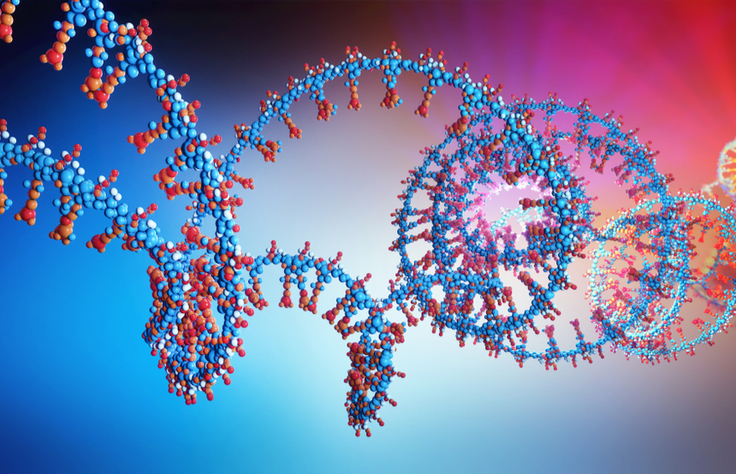Identifying lncRNA Biomarkers in Highly Fragmented RNA Samples
Summary
Overview
Biogazelle performs capture RNA-Seq to identify lncRNAs and mRNA mutations in FFPE and liquid biopsy cancer samples.
Challenge
FFPE and liquid biopsy samples combine the challenges of ultra-low input and highly fragmented RNA.
Solution
Biogazelle chose the NextSeq 500 System and the TruSeq RNA Exome Library Prep Kit. The company works with Illumina to optimize capture RNA-Seq workflows, develop custom probes, and implement unique capture processes.
Benefits
Biogazelle can perform accurate and sensitive lncRNA measurements with a few nanograms of total RNA, even from FFPE and liquid biopsy samples.
Introduction
A decades long fascination with RNA led Professor Jo Vandesompele, PhD to found Biogazelle in 2007. The company provides transcriptome analysis and experimental design services to pharmaceutical, biotechnology, and clinical researchers. Its breadth of services include: RNA biomarker discoveries and validation through customized RNA quantification studies; high-throughput antisense oligonucleotide screenings; the identification, measurement, and silencing of long-coding RNA (lncRNA) targets; and assisting customers with lead drug discovery and preclinical studies.
Noncoding RNA studies are at the heart of much of Biogazelle’s oncology work. Some cancer cells appear to be addicted to the presence of certain lncRNAs and die when the transcript is silenced.1 Working with formalin-fixed paraffin-embedded (FFPE) and liquid biopsy samples can be difficult because of the low input amounts and highly fragmented nature of these cancer samples. Biogazelle uses the NextSeq 500 System and TruSeq RNA Exome kit to perform RNA-Seq, obtaining the most information from these samples.

Jo Vandesompele, PhD, is a Professor at Ghent University, and Co-Founder and Chief Scientific Officer at Biogazelle.
Making the Most of Highly Fragmented Samples
According to Professor Vandesompele, there isn’t a better instrument available for RNA-Seq than the NextSeq 500 System. “It has the capacity, flexibility, and scale that we need to perform total RNA-Seq,” Professor Vandesompele said. “It is also very forgiving in terms of supporting diverse library types.”
These cancer specimens are extremely valuable. “Our customers and partners don’t want to sacrifice biomaterial for a method that requires a microgram or even 100 nanograms of RNA,” Professor Vandesompele added.
Biogazelle works with Illumina to reduce the sample amount needed for various RNA-Seq applications. “We’re seeking answers about how small the sample can be to perform RNA-Seq successfully,” Professor Vandesompele said. “Will 10 nanograms work? How about 1 nanogram? Can we sequence a liquid biopsy sample where we cannot even reliably measure the RNA concentration? Surprisingly, it’s not difficult with a few simple, clever modifications. We can perform accurate and sensitive RNA measurements with as little as a few nanograms of total RNA or only 200 µl of a biofluid.2 We are grateful for the Illumina team’s support in enabling us to achieve this.”
The NextSeq 500 System "has the capacity, flexibility, and scale that we need to perform total RNA-Seq. It is also very forgiving in terms of supporting diverse library types."
Overcoming the Challenge
The TruSeq RNA Exome Library Prep Kit offers a “great solution” to address FFPE and liquid biopsy samples that combine the challenges of ultra-low input and highly fragmented RNA. It converts total RNA into template molecules of known strand origin, followed by sequence-capture of exons of interest. “Other total RNA prep methods consume many reads on introns that are not meaningful and generate lower quality data,” Professor Vandesompele stated. “The RNA Exome probe-based capture method is superior and works like a charm.”
The one limitation of RNA Exome is that the probes target only protein-coding genes. “When we performed total RNA-Seq, the lncRNAs were almost at the noise level, with 95% of the reads going to highly abundant coding protein genes,” Professor Vandesompele explained. “As a solution, Illumina used the comprehensive human LNCipedia database that we created at Ghent University to develop custom probes against all of them.3 Supplementing the kit with custom probes targeting these low-abundant, challenging lncRNAs enables us to perform fantastic experiments. It is also opening up numerous possibilities for our customers to study things that they couldn’t before, which is great.”
“The RNA Exome probe-based capture method is superior and works like a charm.”
Modifying Workflows for Low Input Samples
While TruSeq RNA Exome is a good technology for handling low input amounts, Biogazelle has made some workflow modifications depending on the RNA molecule. “For low RNA input amounts, we apply several different tricks, such as increasing the input volume by concentrating the sample,” Professor Vandesompele said.
The Biogazelle team found that multiplexing prior to capture with TruSeq RNA Exome is a problem with liquid biopsies. “Because of the varying RNA content, our libraries are never equimolar,” Professor Vandesompele added. “Instead of pre-capture multiplexing, we perform separate captures for each sample. It is more work, but the data are significantly better and the libraries are equimolar.”
“lncRNAs offer promise in the fields of oncology, neurology, and other disease types. We’re at the beginning of a completely new type of medicine.”
High Value RNA-Seq Oncology Studies
Professor Vandesompele believes that RNA-Seq data provides the same, if not more, informative data as DNA sequencing. The biomarker potential is significantly greater with 49,000 high-confidence lncRNA genes versus 21,000 protein-coding genes. However, the value might lie in looking at RNA and DNA signatures together to assess cancer or other diseases. “lncRNAs offer promise in the fields of oncology, neurology, and other disease types,” Professor Vandesompele said. “We’re at the beginning of a completely new type of medicine.”
Read more about RNA-Seq studies at Biogazelle:
Learn more about the products and systems mentioned in this article:
References
- Huarte M and Rinn JL. Large non-coding RNAs: missing links in cancer? Hum Mol Genet. 2010;19:152-161.
- Biogazelle. Expertise/Liquid biopsies. www.biogazelle.com/expertise/liquid-biopsies. Accessed. June 17, 2019
- LNCipedia. A comprehensive compendium of human long non-coding RNAs. lncipedia.org/. Accessed May 28, 2019.
